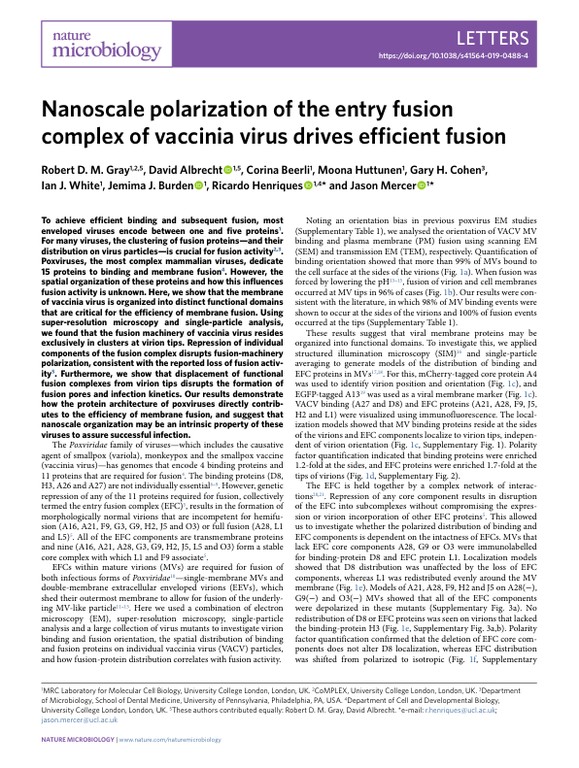Nanoscale polarization of the entry fusion complex of vaccinia virus drives efficient fusion
Technologies: NanoJ () and NanoJ-VirusMapper
Paper published in Nature Microbiology, July 2019
Publisher: Nature Publishing Group UK London

The manuscript by Gray et al. and Mercer et al. explore different aspects of vaccinia virus (VACV) infection at the nanoscale level. Gray et al. used super-resolution microscopy and single-particle analysis to investigate the organization and function of VACV's fusion machinery. They found that the fusion machinery resides exclusively in clusters at virion tips and that its polarization and clustering are crucial for efficient MV and EEV virus–cell fusion. Mercer et al. focused on the structural basis for the binding of a neutralizing antibody to the poxvirus L1 protein. They identified a virus protein, A27L, which plays a role in virion envelopment and forms covalently linked trimers. Both studies provide valuable insights into the mechanisms of VACV protein binding, entry, and fusion, contributing to a better understanding of poxvirus infection.